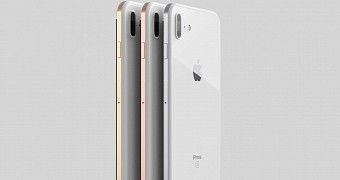Apple is expected to release the iPhone 8 this year, a smartphone that will incorporate many design changes and feature wireless charging, aside from other additions. The latest report from MacRumors says that the iPhone 8 will have 3D Facial Recognition.
Apple has been rumored to ditch the physical Home Button on the new iPhone and thus replace the Touch ID technology. JPMorgan analyst Rod Hall has stated that the 5.8-inch iPhone with edge-to-edge OLED display will have 3D facial recognition.
The analyst added that the iPhone 7s and iPhone 7s Plus could also feature a 3D laser scanner, considering that Apple has increased the volume of modules requested from its suppliers. The scanner is said to add $10 to $15 per module to the iPhone 8’s price, which is rumored to reach $1,000. The OLED display, glass casing, and increased production raise the price of the phone by $100.
Bigger display size and virtual capacitive buttons
The analyst says that the 3D facial recognition is potentially more secure than Touch ID, which sometimes doesn’t work in wet conditions. Apple could also use the technology for increasing Apple Pay adoption among banks and retailers.
The report goes even further and says that the 3D scanner may be used for augmented reality, but that might not happen until 2018. Apple, however, has affirmed that it will start focusing more on AR.
A 3D scanning API might eventually be made available to developers, who could find creative ways to enhance user experience. The analyst added that the iPhone 8 could see an official unveiling as early as WWDC 2017, which starts on June 5. However, Apple hasn’t announced any devices during WWDC since 2010, so we’re not that sure that the iPhone 8 will make an appearance this summer.
Other rumors have suggested that Apple may not give up on Touch ID completely and embed a fingerprint sensor into the display. In addition, if Apple intends to ditch the home button, the phone would have to use virtual capacitive buttons and would have an actual display size of 5.5 inches but in a 4.7-inch body.

 14 DAY TRIAL //
14 DAY TRIAL //